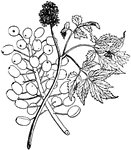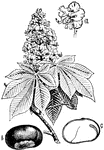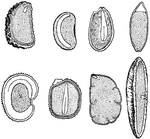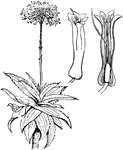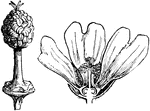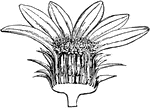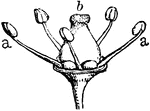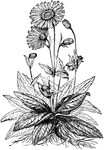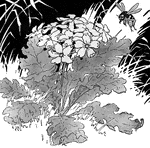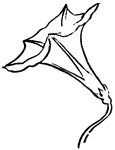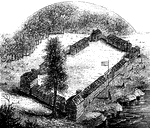
Boone's Fort
"Boone's Fort. This sketch is from a drawing by Colonel Henderson, and published in Collin's Historical…
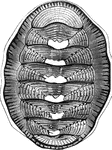
Chiton chilensis
"The Chiton Chilensis has a smooth border; it is found in crevices of rocks under stones, near…

Henry VIII
"Henry VIII (1509-1547) came to the throne in 1509, inheriting a vast treasure which he owed to the…
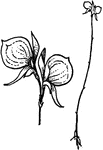
Utricularia
No leaf-sheaths present; flower cluster consisting of one to several showy, irregular, yellow, or purple…
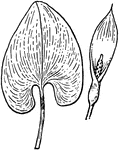
Pontederia
Leaves with blunt lobes; flower conspicuous, purple, not on a fleshy axis enclosed in a leaf-like sheath.

Agrimensor
"Agrimony (Agrimonia Eupatoria) showing branch, flowering spray, and fruit."-Whitney, 1902
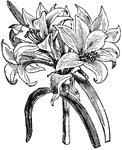
Belladonna Lily
"Of genus Amaryllis- A genus of bulbous plants, natural order amaryllidacæ, with large, bright…
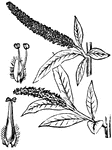
Willow
"Ament-A kind of inflorescence consisting of unisexual apetalous flowers growing in the axils of scales…

Drone Bee
"The working bee, for collecting wax, enters a flower, the stamens of which are loaded with pollen.…

Working Bees
""The working bee, for collecting wax, enters a flower, the stamens of which are loaded with pollen.…

Aquilegia
"Inflorescence of Aquilegia vulgaris (garden columbine). a, flower; b, same, cut vertically; c, pistils."-Whitney,…

Earwigs
"The Foficulina includes the Earwig, Forficula, which appears to live principally upon vegetable…
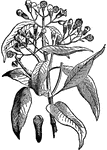
Cloves
"Cloves are a very pungent and aromatic spice, the dried flower-buds of a tree a native of the Molucca…
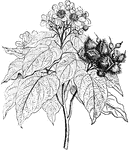
Arnotto
"Arnotto-extremely common in Jamaica and other parts of the West Indies, and has been introduced into…
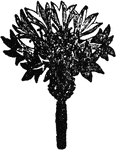
Corn flower
"The Corn flower is a well-known composite weed of cornfields, universally known and admired for the…
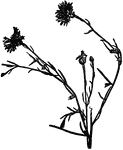
Corn flower
"The Corn flower is a well-known composite weed of cornfields, universally known and admired for the…
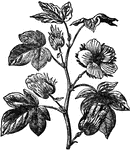
Cotton Plant
"Cotton is a vegetable hair or filament constituting the wing of the seed of the different species of…
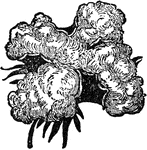
Cotton Flower
"Cotton is a vegetable hair or filament constituting the wing of the seed of the different species of…
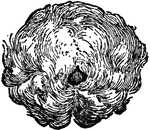
Cotton Flower
"Cotton is a vegetable hair or filament constituting the wing of the seed of the different species of…

Daffodil
"Daffodil is the popular name of a plant which is one of the earliest ornaments of our gardens, being…

Double Tuberose
"Tuberose (Polianthus) is a genus of plants of the natural order Liliaceæ. The plant is in high…
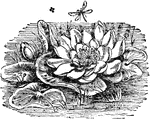
White Water Lily
"The Water Lily is an exogenous aquatic plant including eight genera, and all possessing submerged root…
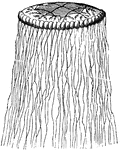
Cuvieria carisochroma
"Which is without a central peduncle, yet has numerous long appendages hanging from its border." —…

Iguana
"Iguana is a genus of saurian reptiles, natives of Brazil, Cayenne, the Bahamas, and neighboring localities…
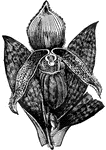
Lady's Slipper
"Lady's Slipper is a genus of plants. The genus is remarkable for the large inflated lip of the corolla.…

Surface of a nail
"Concave or Adherent Surface of the Nail. A, border of the root; B, whitish portion…
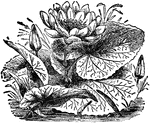
Egyptian Water Lily
"Lotus is a name given to various flowers, including several beautiful species of water lily, especially…

Marsh Mallow
"The Marsh Mallow is a softly pubescent plant, with axillary cymes of large rosy leaves. a,…
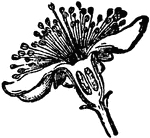
Myrtle Flower
"Myrtle is a genus of plants, natural order Myrtaceæ, consisting of aromatic trees or shrubs,…
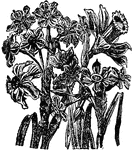
Narcissus
"Narcissus is an extensive genus of bulbous plants. The species are numerous, and from their hardiness,…
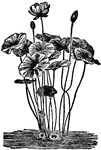
Nelumbium
"Nelumbium is the typical and only genus of the order Nelumbiaceæ. The species are remarkable…
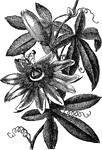
Passion Flower
"Pasiflora is the passion-flower. Generally climbing herbs or shrubs. Fruit succulent, seeds many. Found…

Aegis
"signifies, literally, a goat skin. According to ancient mythology, the aegis worn by Jupiter was the…
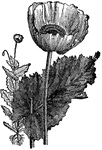
Opium Poppy
"Poppy is a genus of plants, of which there are numerous species, mostly natives of Europe and Asia,…
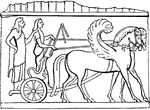
Antyx
"The rim or border of anything, especially of a shield or chariot. The trim of the large round shield…
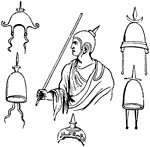
Apex
"A cap worn by the flamines and salii at Rome. The essential part of the apex, to which alone the name…
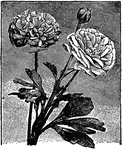
Ranunculus
"Ranunculus, buttercup, crowfoot; the typical genus of the order Ranunculaceæ. Known species about…
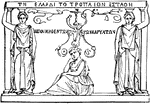
Caryatides
"Caryae was a city in Arcadia, near the Laconian border, the inhabitants of which joined the Persians…

Taj Mahal
"The Taj Mahal, or Mehal, ('Gem of Buildings'), is a famous mausoleum, erected at Agra, India, by Shah…
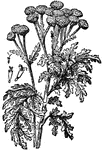
Tansy
"Tansy is a genus of Compositæ, numbering about 50 species of strong-scented herbs, often shrubby…

